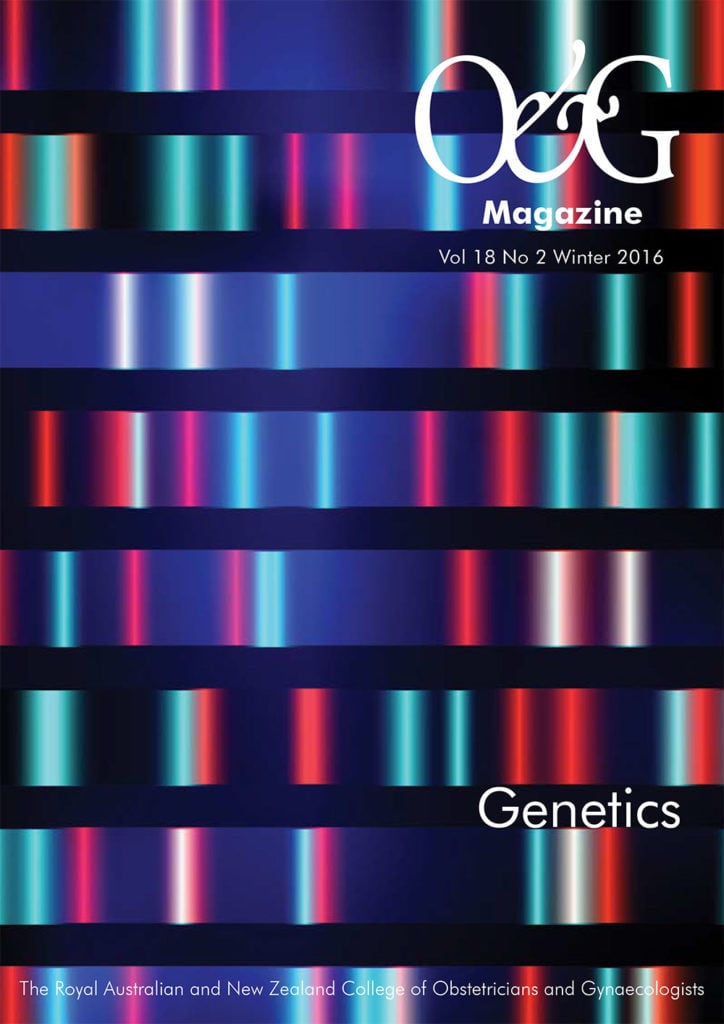It is hard to find a family in Australia that is not troubled by at least one member with a serious alcohol or drug problem. Yet trying to get expert help for a loved one with a serious substance abuse issue is never easy in Australia. Also, whatever branch of medicine we practise, we still run into many patients struggling with major dependance problems. So, either because of your professional work or because of your family, the reasons why Australia responds to alcohol and drug problems so poorly is relevant to all of us.
No other branch of medicine or health policy is as politicised as the alcohol and drug field. The way our community responds to alcohol is dominated by what is – and what is not – acceptable to the drinks industry. When responding to illicit drugs, poor policy has for decades been great politics. But the fact that the public health David was able to eventually overcome the tobacco industry Goliath suggests our terrible alcohol and illicit drug policies are not immutable.
Australia’s drug policy begins
Australia’s drug policy resulted from a combination of elements. Our first drug laws specifically only prohibited the smoking of opium. These laws were passed in South Australia, Victoria and New South Wales during the gold rush period. Chinese people working on the goldfields were the only people in Australia at the time to smoke opium. California, USA, and British Colombia, Canada, passed similar laws around the same time and for the same reason: racism. Edible opium was lawful, taxed and regulated in Australia until it was prohibited in 1906, but edible opium was consumed by many mainstream Australians.
The failure of the edible opium ban was quickly recognised. The Commonwealth Comptroller-General of Customs, HNP Wollaston, stated in his report to the Commonwealth Parliament in 1908: ‘it is very doubtful if such prohibition has lessened to an extent the amount which is brought in to Australia’. He added: ‘owing to total prohibition, the price of opium has risen enormously … the Commonwealth gladly gave up about £60,000 revenue with a view to a suppression of the evil, but the result has not been what has been hoped for. What now appears to be the effect of total prohibition is that, while we have lost the duty, the opium is still imported pretty freely.’1
The origins of drug prohibition
Momentum for global drug prohibition started building in the early 20th century. The US convened the International Opium Commission, a meeting of 13 nations in Shanghai, in 1909, to discuss a global ban on opium. For many years, American missionaries in China had been reporting to Washington DC their observation of the immense cruelty of the powerful British, forcing opium on to citizens of much weaker China. Chinese opposition to this policy led to two opium wars in the 19th century against a much more powerful UK. The UK seized Hong Kong for 150 years to punish China for waging war and losing.
The International Opium Commission led to other meetings and agreements, culminating in three United Nations international drug treaties (1961, 1971 and 1988). Virtually all countries have signed and ratified these treaties, committing these countries to pass laws imposing criminal sanctions on persons convicted of selling, buying or possessing prohibited drugs.
The UN has a system for selecting which drugs are to be banned. At present, about 250 drugs are on this list. Following UN pressure, Australia banned the production and importation of heroin in 1953. Australia’s problems with heroin began after and not before the Commonwealth government banned heroin. The leaders of the Australian medical profession opposed the decision to ban heroin, including the British Medical Association (this was before the Australian Medical Association had been established).
Scrutiny of our national drug policy
For a number of decades, drug prohibition in Australia, as in other countries, was strongly supported, rarely questioned and politically beyond reproach. Problems started appearing slowly in the 1970s, with a burgeoning heroin problem. An Australian government has initiated a major enquiry or Royal Commission almost every year since. In the US, President Nixon’s declaration of a war against drugs in 1971 helped him to win the 1972 presidential elections in a landslide. Nixon won 49 of the 50 states, despite the hugely unpopular Vietnam War. Politicians in other countries took note of this apparent political ‘Magic Pudding’.
In the 1980s, cracks in our drug policy started appearing and getting wider. In 1985, the then Prime Minister (Bob Hawke) convened a meeting of all state Premiers and the NT Chief Minister that approved ‘harm minimisation’ becoming Australia’s official national drug policy. HIV spreading among and from people who inject drugs was becoming an increasing concern. Calls for the establishment of needle syringe programs to stem the spread of HIV were rejected. After a pilot project was established in Sydney as an act of civil disobedience, the NSW government decided to allow needle syringe programs. These clearly helped to avert an HIV epidemic, saving thousands of lives and billions of dollars. The effectiveness, safety and cost effectiveness of harm reduction contrasted with the lack of evidence for drug law enforcement and its often-severe collateral damage and high cost.
The winds of change start to blow
In 2011, the Global Commission on Drug Policy was established with about 20 former Presidents, Prime Ministers and other senior leaders from a number of countries. The Commission’s questioning of the continuation of global drug prohibition attracted considerable international media. The momentum for change has been gathering pace ever since. In 2012, Australia21, a small independent think tank, issued two reports that also attracted considerable media coverage. In November 2012, majorities of voters in Colorado and Washington in the US created a milestone in global drug policy by supporting ballot initiatives to begin taxing and regulating cannabis. In July 2013, 119 of the 120 members of the New Zealand parliament voted in favour of a bill to regulate certain new psychoactive substances. Although the bill was suspended after ten months, the clear benefits and lack of serious negative consequences were evident.2
In recent decades, Australian governments have generously funded drug law enforcement and often used harsh rhetoric to refer to people who use drugs. Health and social interventions have been starved of funds and rarely mentioned by government. Meanwhile the illicit drug market continued to expand with increasing numbers of consumers and a growing array of new drug types.3The price of drugs continued to fall and 70–90 per cent of drug users reported that obtaining drugs was ‘easy’ or ‘very easy’. Deaths, disease, crime, corruption and violence increased. The number of heroin overdose deaths increased from six in 1964, to peak at 1116 in 1997, before settling at about 400 a year for the early 21st century and then starting to rise again.
The (then) Prime Minister Tony Abbott admitted in 2014 that the war on drugs was a war that could not be won, but could be lost. Serving and retired police commissioners started to acknowledge that Australia could not arrest or imprison its way out of its drug problems.
‘The paramount need is to re-define drugs as primarily a health and social issue, rather than a primarily criminal justice issue.’
What is to be done?
The paramount need is to re-define drugs as primarily a health and social issue, rather than a primarily criminal justice issue. Criminal sanctions need to be reduced and, where possible, be eliminated (‘decriminalisation’). Governments will also have to try to regulate as much of the drugs market as they can. It will never be possible to regulate all of the market. There will always be some black market. Drug treatment has to be expanded and improved so that it becomes like any other health service.
Australia is not unusual in facing a difficult and complicated drug policy problem. Most countries are in a similar predicament. Global drug prohibition is slowly unravelling. The federal system makes it harder to develop a consistent national approach, but also enables states or territories to undertake experiments.
A number of specific drug policy issues are now being discussed. After several years of debate, Australia is likely to make medicinal cannabis lawful in 2016. In many countries, a few years after medicinal cannabis became lawful, a debate developed regarding the taxing and regulating of recreational cannabis. The deaths of a number of young Australians after taking drugs at youth music events in recent years has provoked a debate about continuing the current policy of saturation policing with sniffer dogs or perhaps evaluating pill testing. This has been available in some European countries for a quarter century and seems to have reduced the number of such deaths. Each state and territory in Australia now has laws enabling random roadside saliva tests of drivers for cannabis, amphetamine and ecstasy. The offence is to have detectable levels in oral fluids. Though introduced as a road-safety measure, the drugs tested for only make a modest contribution to the risk of a road crash death while other drugs, which pose a much greater risk, are not tested for. Our drug-driving laws, based on poor science, are now coming under increasing scrutiny and rightly so.
The establishment of Sydney’s Medically Supervised Injecting Centre in Kings Cross in 2001 has clearly saved lives and dollars, referred many clients to health and social services and improved the amenity of the neighbourhood; however, it is still the only such centre in the country. The former Victorian Premier and others have been advocating for such a centre to be established in Melbourne. Meanwhile, the increasing number of drug overdose deaths continues to be ignored. Although alcohol is responsible far greater health, social and economic costs than illicit drugs, and the means of reducing these harms are well known (increasing price, reducing availability, regulating advertising), there is little change in policy.
Since becoming Prime Minister, in 2015, Malcolm Turnbull has often emphasised the need for Australia to become more nimble, agile and innovative. There are few areas where Australia needs these changes more than in the alcohol and drug field.
References
- Manderson D. Mr. Sin to Mr. Big: A History of Australian Drug Laws. 1993. Oxford University Press.
- Newberry J, Wodak A, Sellman D, Robinson G. New Zealand’s regulation of new psychoactive substances. BMJ. 2014; 348: g1534
- Wodak A. The abject failure of drug prohibition. Australian & New Zealand Journal of Criminology. 2014; 1-12
http://idhdp.com/media/362648/anj524424_rev2-wodak.pdf .






Leave a Reply